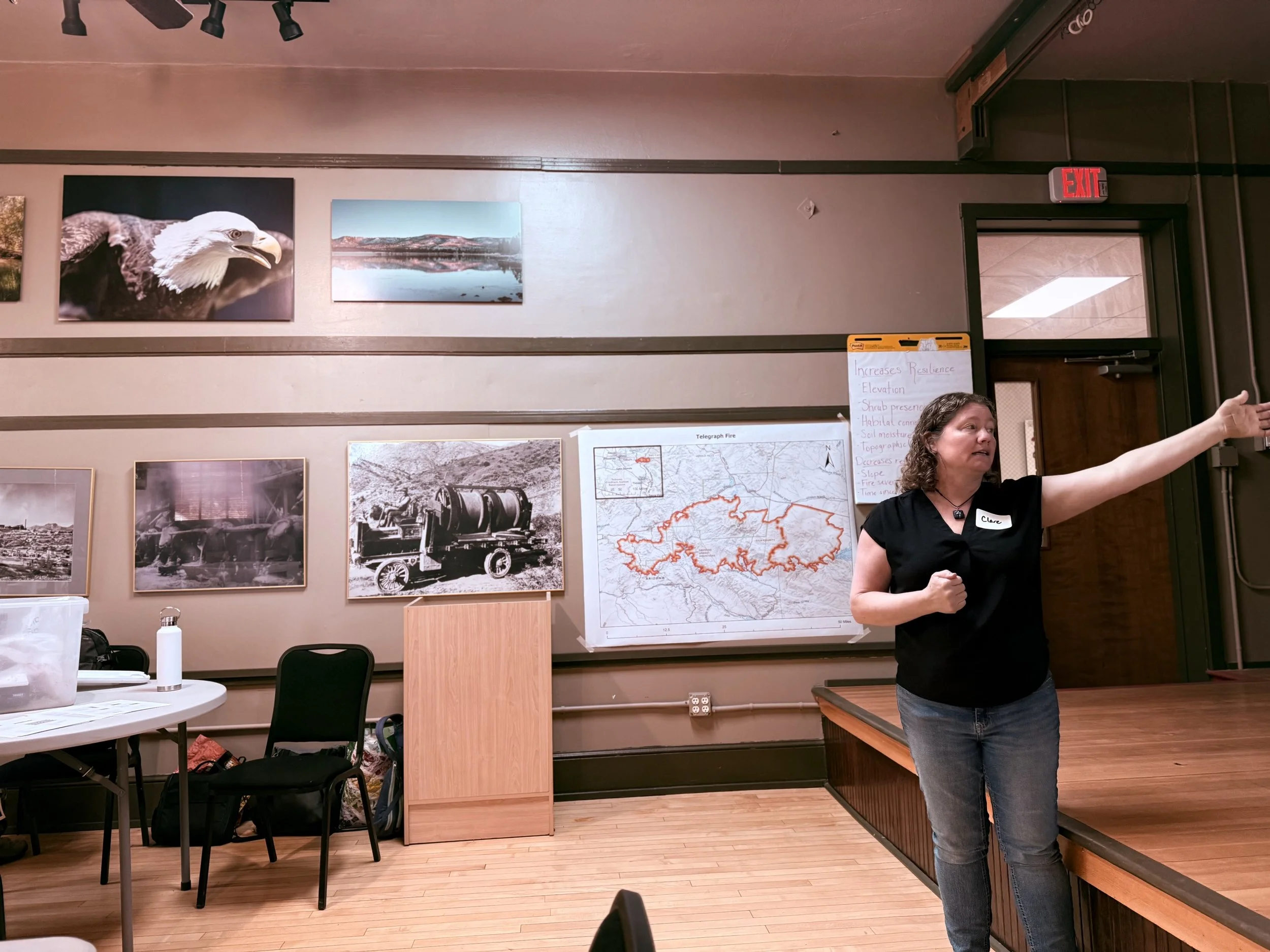That’s Fire!
Fire resilience isn’t just about the landscape—it’s also about people. Our group headed to Superior, AZ to talk with community leaders about what factors contributed to resilience after the Telegraph Fire. The message was clear – preparing for and responding to fires requires a whole community approach and coordination between the USDA Forest Service, the government agency that responds to wildfires in the West, and local officials.
The Telegraph Fire in Arizona burned approximately 180,757 acres in the Pinal Mountains and surrounding areas in June 2021. It was one of the largest wildfires in Arizona history, causing evacuations, road closures, and significant ecological impacts. Fires make landscapes prone to flooding, nearly as devastating at the fire itself.
Despite the magnitude of the fire, this area of Arizona effectively prevented fatalities through consistent efforts to coordinate fire response across agencies, effectively communicate emergencies, and ‘harden’ homes against fire threats.
One takeaway was the importance of long-term commitment—while emergency alerts and immediate mitigation measures are effective, public awareness often wanes without ongoing fire threats.
Federal government support, both in terms of providing firefighting resources, as well as shaping the responsibility of the insurance markets is key.
Fires, like the ones that have reshaped Arizona’s terrain, aren’t going away. But through collaboration, science-driven decision-making, and community engagement, we can better prepare for the future.
Dr. Clare Aslan giving a workshop on resilience after fire, this workshop took place in Miami, AZ after the Telegraph fire.
